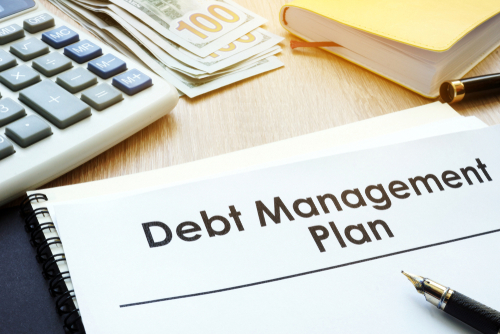Debt can be a heavy financial burden that stresses you out and makes it harder for you to reach your financial objectives. Finding efficient methods to pay off these obligations—student loans, credit card debt, or personal loans—is essential for regaining control over your money. This blog post will discuss various debt management techniques that can speed up the repayment of your loans and credit card debt. You can lower your debt, raise your credit score, and ultimately achieve financial freedom by putting these strategies into practice.
1.Evaluate your debt
Understanding the extent of your debt is essential before beginning any debt management strategy. Make a detailed list of every debt you have, including the total amount owed, the interest rate, and the minimum payment due each month. You will have a clear understanding of your financial obligations after completing this assessment, which will help you prioritize your repayment plan
2. Establish a budget
A realistic budget must be created in order to manage debt effectively. Keep track of your earnings and outgoing costs to determine how much you can set aside each month for debt repayment. Find ways to reduce your discretionary spending so you can use the extra money to pay off your debts, such as loans and credit cards. Do not forget to budget for an emergency fund to prevent taking on more debt in the event of unanticipated expenses.
3. The snowball approach
The snowball approach to debt repayment is one well-liked plan. This method involves making minimum payments on all of your debts while concentrating on paying off the one with the smallest balance first. You continue the process by rolling the payment over to the next smallest debt after the smallest one has been paid off. By offering small victories and encouraging you to take on bigger debts, the snowball method gives you a psychological boost.

4. Avalanche Method
The avalanche method prioritizes debts based on interest rates, in contrast to the snowball method. Make minimum payments on all other debts while paying off the debt with the highest interest rate first. After paying off the debt with the highest interest rate, move on to the next. This strategy reduces your interest payments over time, saving you money.
5. Consolidating Debt
Consolidating your debts into a single loan may be an effective strategy if you have several high-interest debts. In order to consolidate your debts into one monthly payment, you must take out a new loan to pay off all of your current debts. By streamlining your repayment process and possibly lowering your interest rate, this tactic can help you save money over time.
6. Negotiating with Creditors
If you are having a hard time making ends meet, contact them and explain your financial situation, placing special emphasis on your determination to repay the debt. In some cases, creditors may be willing to reduce interest rates, lower minimum payments, or establish a more manageable repayment plan.
7. Seeking Expert Assistance
Seeking professional assistance from credit counseling organizations or debt management firms can be helpful if you find that you are completely overwhelmed by debt and are having trouble moving forward. These organizations can offer professional advice, deal with creditors on your behalf, and develop a tailored debt management strategy that meets your requirements.
Managing debt effectively is essential for achieving financial stability. You can take charge of your finances and work toward debt freedom by putting the above strategies into practice and remaining steadfast in your repayment commitment. Keep in mind that paying off loans and credit cards requires self-control, tenacity, and initiative. You can overcome your debt and pave the way to a more secure financial future by remaining committed to your financial goals over time.
